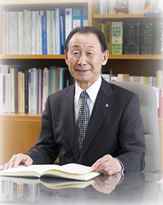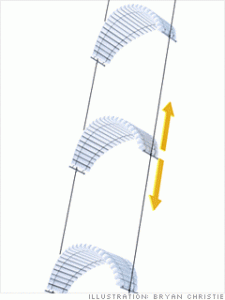By Colin Houghton
Since 2003, the nuclear fuel reprocessing plant in Rokkasho village, Aomori Prefecture, Japan, has shared the area with 77 large wind turbines.
The Mayor of Rokkasho said that the village is an ideal site for harnessing electricity from wind power because the winds blow there almost all through the year. A local resident, 75 years old said the wind turbines were “better than the nuclear fuel reprocessing plant that has caused radiation fears.” This comment is hardly surprising since the Fukushima nuclear disaster.
Noting that a large wind power generator consists of up to 20,000 parts, a power company spokesperson commented that if wind power generation becomes widespread, it will vitalize manufacturers of parts such as motors and bring about positive economic effects to Japan including help create jobs in communities that host such facilities.
The Mayor said that while wind power electricity generation could not be compared to the area’s nuclear fuel recycling plant, for which the national government extends hundreds of millions of yen in subsidies, he hopes that wind power generation “will steadily increase jobs for local residents and vitalize the regional economy.”

Mayor of Rokkasho Village, Kenji Furukawa
Rokkasho occupies the eastern coastline of the base of Shimokita Peninsula, facing the Pacific Ocean. There has always been opposition to the nuclear reprocessing plant at Rokkasho. During the 1990s anti-nuclear groups in Japan released studies showing the risks of routine operation of the Rokkasho Reprocessing Plant, while in May, 2006 an international awareness campaign about the dangers of the reprocessing plant, Stop Rokkasho, was launched by the internationally respected Japanese musician Ryuichi Sakamoto.
Last year, Toyota, Hitachi, Panasonic Electric Works and Japan Wind Development begun the Demonstration Project Intelligent Supply Network in the village. According to the promoters, the power grid, which is isolated, only uses renewable energy sources will confirm the viability of the technologies that help make more efficient use of energy.
The Project aims to verify technologies that enable efficient use of energy”, and uses only renewable energy sources, and is equipped with specific high-capacity batteries and PV power generation systems. Employees of the companies involved in the project live in six experimental buildings. The sources of electricity are a solar power generator and the wind turbines. Toyota officials hope that storage batteries developed through the project can be used in the future in plug-in hybrid vehicles. The demonstration project is due to be concluded in July 2012.



